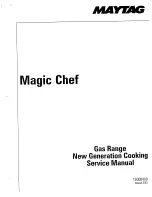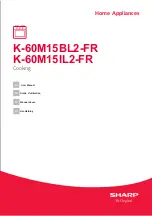
8
U
SI
N
G
T
H
E
R
A
N
G
E:
S
ur
fa
ce
B
ur
ne
rs
Surface Burners (Cont.)
Stove Top Grills
Do not use an after-market stove top grill on your
gas surface burners. A stove top grill will cause
incomplete combustion resulting in carbon monoxide
levels above allowable standards. This could be
hazardous to your health.
Using a Wok
Use only a flat-bottomed wok with a diameter of 14 inches
or less. Make sure the wok bottom sits flat on the grate.
Do not use a wok support ring. Placing the ring over the
burner or grate may cause the burner to work improperly,
resulting in carbon monoxide levels above allowable
standards. This could be hazardous to your health.
Use a flat-bottomed wok.
Do not use stove top grills
Top-of-Range Cookware
Aluminum:
Medium-weight cookware is recommended
because it heats quickly and evenly. Most foods brown
evenly in an aluminum skillet. Use saucepans with tight-
fitting lids when cooking with minimum amounts of water.
Stainless Steel:
This metal alone has poor heating
properties and is usually combined with copper,
aluminum or other metals for improved heat distribution.
Combination metal skillets usually work satisfactorily if
they are used with medium heat or as the manufacturer
recommends.
Cast-Iron:
If heated slowly, most skillets will give
satisfactory results.
Enamelware:
Under some conditions, the enamel
of some cookware may melt. Follow the cookware
manufacturer’s recommendations for cooking methods.
Glass:
There are two types of glass cookware—those
for oven use only and those for top-of-range cooking
(saucepans, coffee and teapots). Glass conducts heat
very slowly.
Heatproof Glass Ceramic:
Can be used for either
surface or oven cooking. It conducts heat very slowly and
cools very slowly. Check the cookware manufacturer’s
directions to be sure it can be used on gas ranges.
295D1703P014 Rev. 0 01-20









































